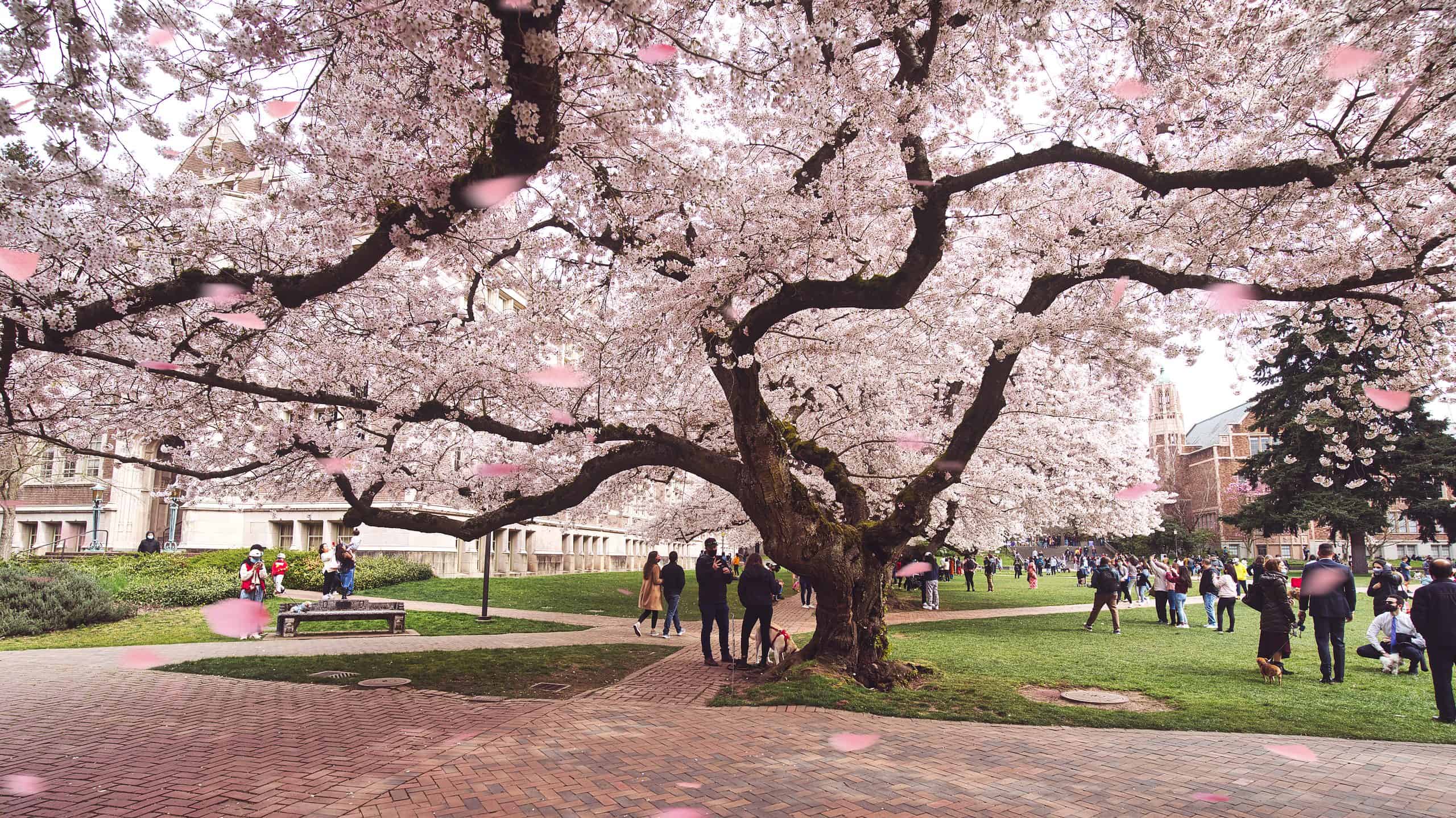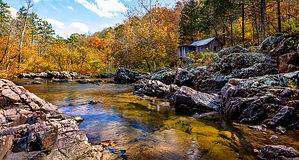Are you looking to add beauty and vibrancy to your yard in no time? Discover our top picks for fast-growing flowering trees that will transform your outdoor space with their stunning blooms.

1. Crape Myrtle

Raspberry-colored crepe myrtle is a fast-growing flowering tree.
©Noel V. Baebler/Shutterstock.com
A Crape Myrtle tree is a beautiful addition to any garden. It is a flowering tree with delicate, brightly colored blooms that come in shades of pink, purple, and white. The leaves are lush and green, and the bark is typically smooth and gray.
To grow a Crape Myrtle tree, it needs full sun and well-drained soil. It can tolerate both dry and wet conditions but prefers moist soil. Apply fertilizer in early spring and late summer. Prune in late winter or early spring to remove any dead or damaged branches. Most crape myrtle varieties are hardy to USDA Zones 6 through 10.
2. Magnolia
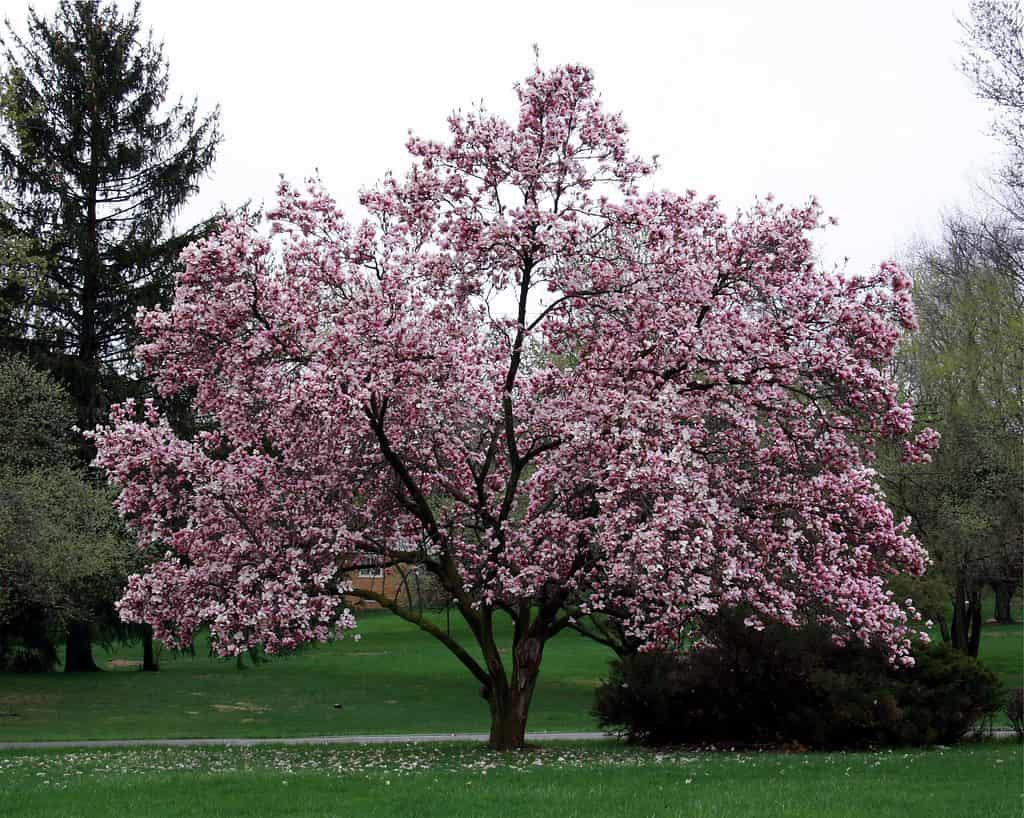
A magnolia tree in full bloom is one of the best things to see every spring.
©shootz photography/Shutterstock.com
Magnolia trees have delicate, fragrant flowers. They have a unique pyramid shape, with long, thin branches and glossy, dark green leaves. They can reach heights of up to 30 feet and can last for decades with proper care. In the springtime, they bloom with white and pink flowers that emit a sweet, floral aroma.
In order to grow a magnolia tree, you will need to find a sunny spot with well-draining soil. Water the tree deeply and regularly, and fertilize in the spring and summer for best results. Prune to help shape the tree and maintain its size. Magnolias are hardy in USDA Zones 7-10.
3. Tulip Tree

This member of the poplar family is a very fast-growing flowering tree.
©Peter Turner Photography/Shutterstock.com
This majestic tree (Liriodendron tulipifera) is native to the eastern and central United States and is one of the largest eastern hardwood trees. It is recognizable by its distinctive tulip-shaped leaves, which are four-lobed and deep green with a yellowish-green hue. During the summer, the tree is covered in bright yellow-green flowers, which are star-shaped with an orange band at the base. In the fall, the leaves turn to a rich yellow color, and cone-shaped fruits replace the flowers.
Growing a Tulip Tree is an easy task if you provide it with the right conditions. It needs a sunny spot and well-drained soil. Water the tree regularly during its first season, and then allow the soil to dry out between waterings. Prune the tree in late winter to promote strong growth and a healthy shape. Fertilize the tree in late winter with a balanced fertilizer for best results. With proper care and attention, the Tulip Tree will reach heights of up to 80 feet and live for more than 150 years. It is one of the most eye-catching of the fast-growing flowering trees because of its very thick trunk.
4. Flowering Cherry
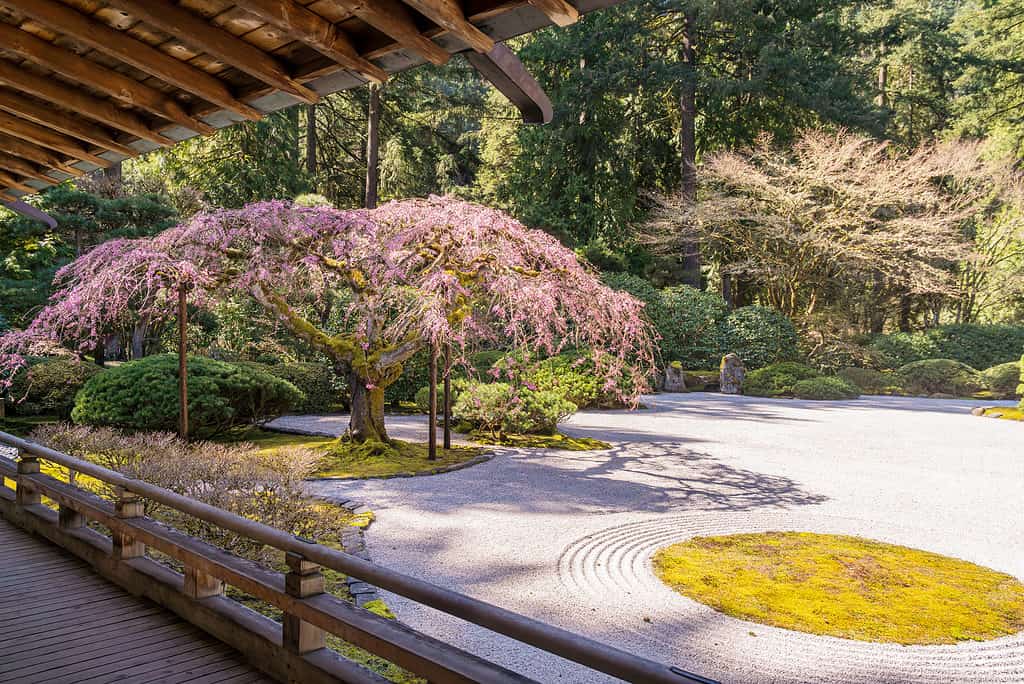
If you plant a flowering cherry tree, the bees and butterflies will thank you.
©Michael Warwick/Shutterstock.com
A cherry tree is a beautiful sight to behold, with its lush, deep green foliage and its gorgeous, bright pink and white blossoms. Although they flower in the springtime, cherry trees are fast-growing flowering trees that are beautiful all year.
The flowering cherry is a hardy tree that can tolerate a wide range of climates. It prefers full sun and moist, well-drained soil. Water the tree regularly during its first season to help it establish itself in your yard. Prune in late winter or early spring to promote strong growth and shape, while fertilizing with a balanced fertilizer will ensure optimal blooms each year. This tree is 25 feet tall and hardy in Zones 5-9.
5. Eastern Redbud
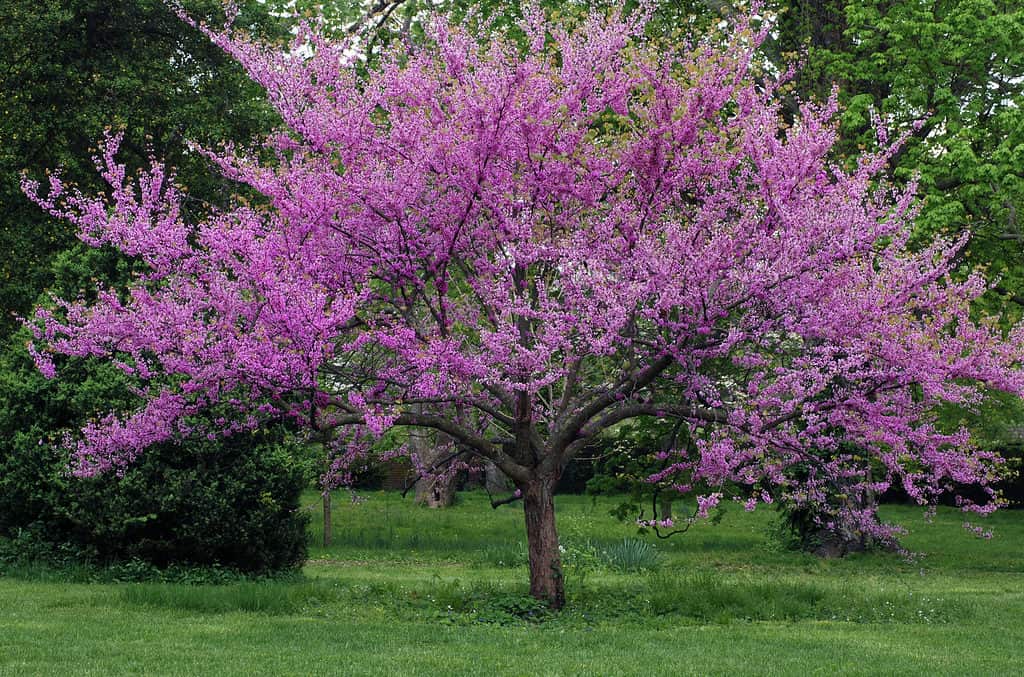
The lavender flowers of the Eastern redbud feed many types of pollinators.
©Marie C Fields/Shutterstock.com
Eastern Redbud trees are small-to-medium-sized trees, often reaching heights of 25-30 feet. They have a rounded shape, with a short trunk and spreading branches. In springtime, they grow small pink or purple flowers. The leaves are dark green and heart-shaped. Pollinators love them because they bloom before most other plants in the garden are awake.
In order to properly grow an Eastern Redbud tree, plant it in full sun to partial shade. Provide well-drained and slightly acidic soil. Water the tree regularly to ensure it stays healthy, and prune it to maintain its shape.
6. Linden Tree
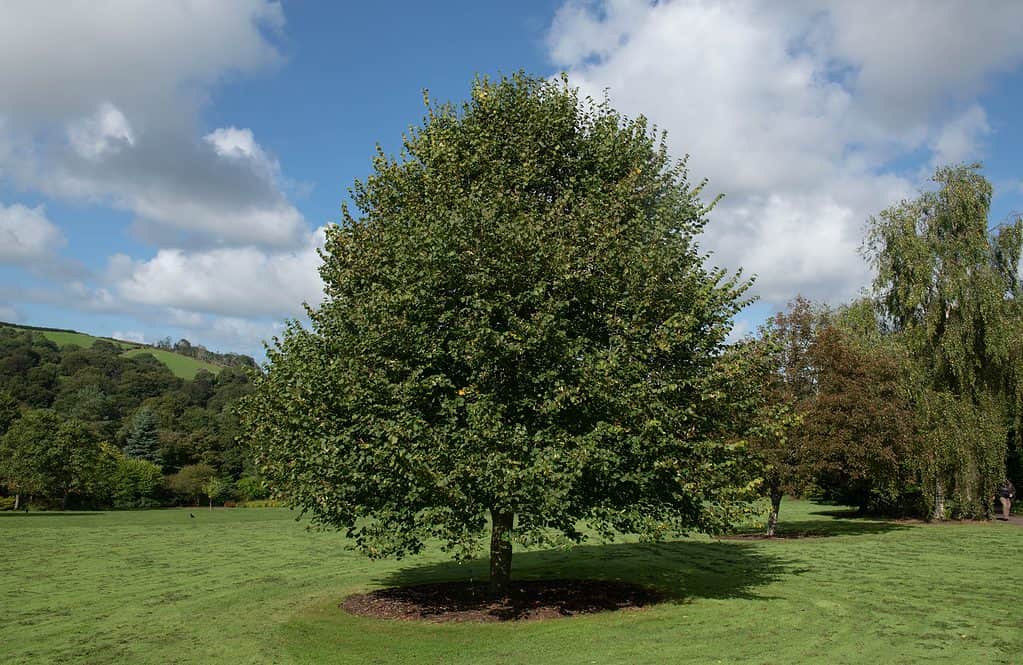
Some people call linden trees small-leaved lime trees. They have beautiful flowers that bees love.
©Peter Turner Photography/Shutterstock.com
Tilia, commonly referred to as the Linden tree, is a fast-growing species native to North America. This type of tree makes an excellent shade tree and is often popular in rural towns but not typically in cities due to its sensitivity to pollution. In the early summer, blooms open on the Linden tree with a sweet taste like honey and attract bees. These trees can reach heights of 50-80 feet.
7. Crabapple
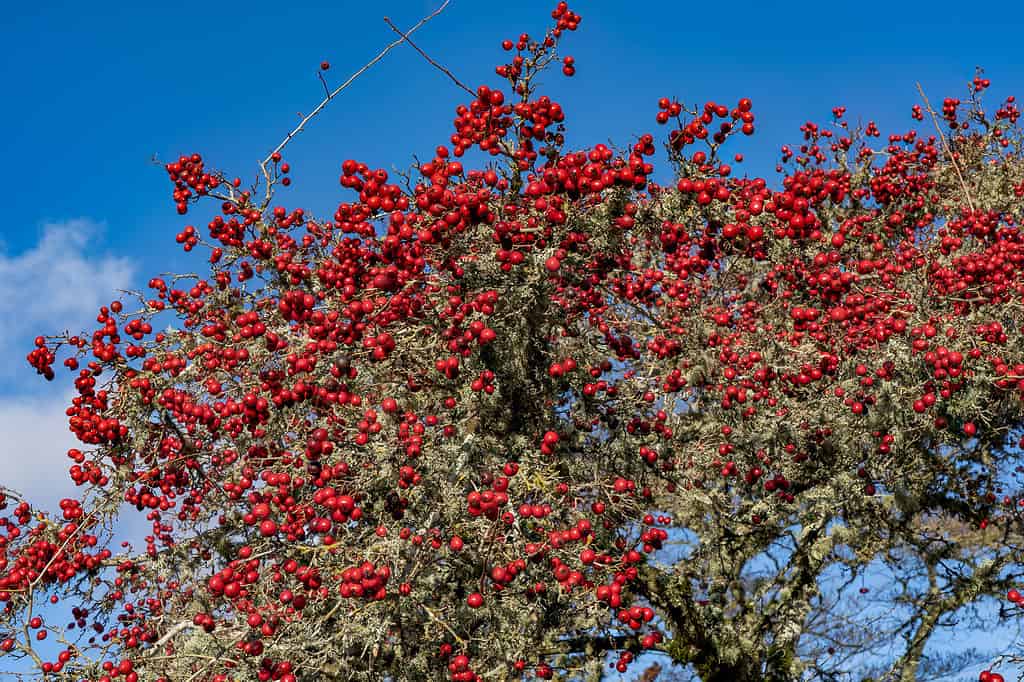
Both the blooms and fruits of this fast-growing flowering tree are beneficial to wildlife.
©Bob Pool/Shutterstock.com
A crabapple tree is a small, deciduous tree with a rounded form. It typically grows to 12-15 feet tall, with a spread of 10-15 feet. Its trunk is slender, and branches are spreading and crooked. The bark is grayish-brown and furrowed. The leaves are oval-shaped and 1-3 inches long, with a serrated edge and a pointed tip. They are dark green on top and lighter green on the bottom. The flowers are white and appear in clusters of 2-5, and the fruit is a small red or yellow apple.
To grow a crabapple tree, you will need full sun and well-draining soil. Plant it in a spot that gets at least 6 hours of sunlight a day. It is hardy from zones 4 to 8.
The flowers of the crabapple tree are a great source of nectar for bees, butterflies, and other pollinators. The fruits are important for birds and many animals, like mice, voles, deer, and bears.
8. Bee Tree
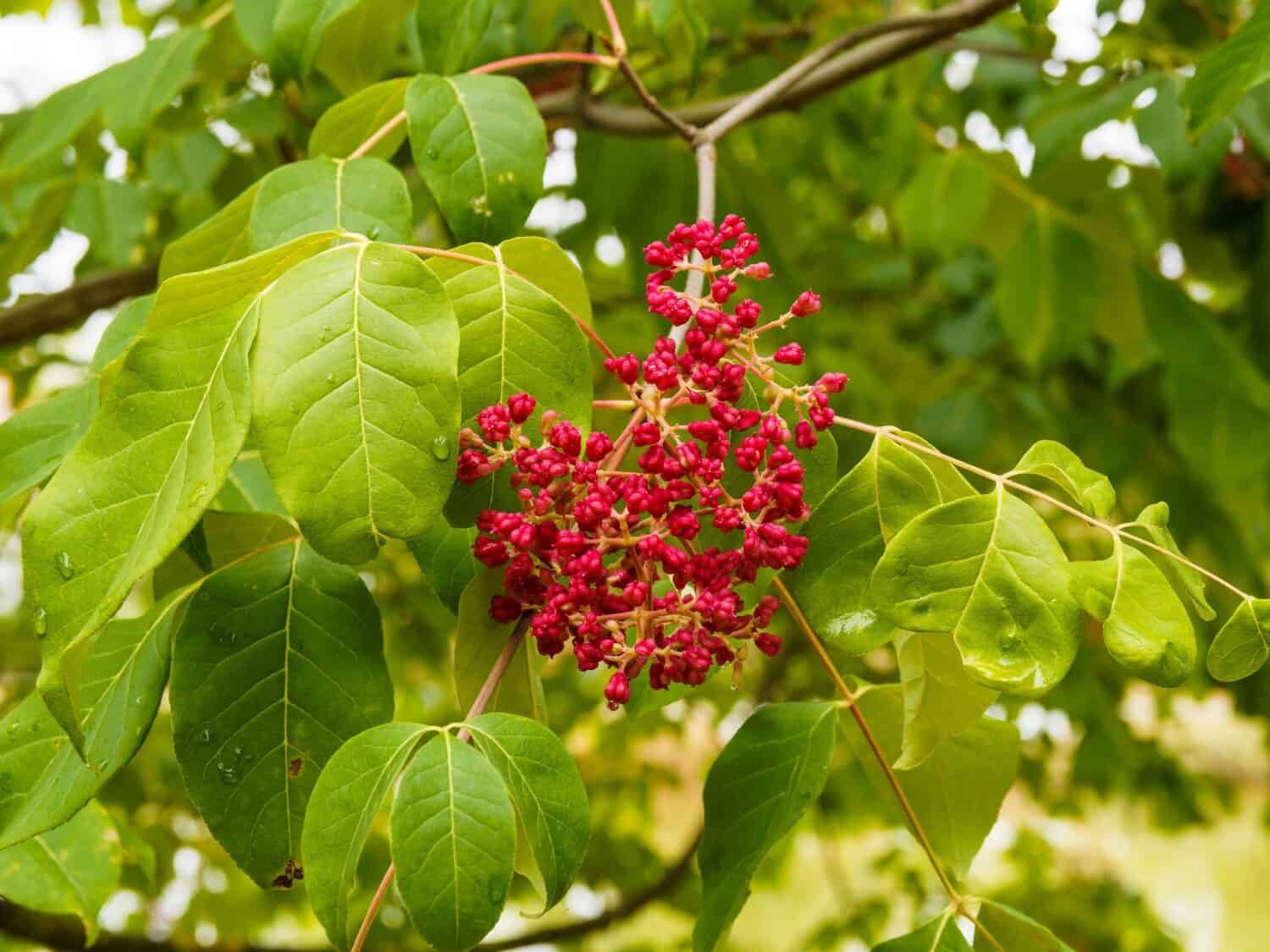
If you have a small yard, consider the bee tree (Tetradium daniellii), which only grows 30 feet tall.
©MacBen/Shutterstock.com
Tetradium daniellii, commonly referred to as the bee tree, is a deciduous species native to Korea and southwestern China. It is a fast-growing tree with a rounded crown that typically grows to 25-30 feet tall and wide. Small white (sometimes yellow or pink) fragrant flowers bloom in July and August and are a favorite with honey bees. Reddish-purple seed pods form after flowering and remain on the tree from late August to November. Birds love to eat the seeds. Grow it in moist, fertile, well-drained soil in full sun or some light shade. You can expect it to grow rapidly in the first five years!
9. Verawood
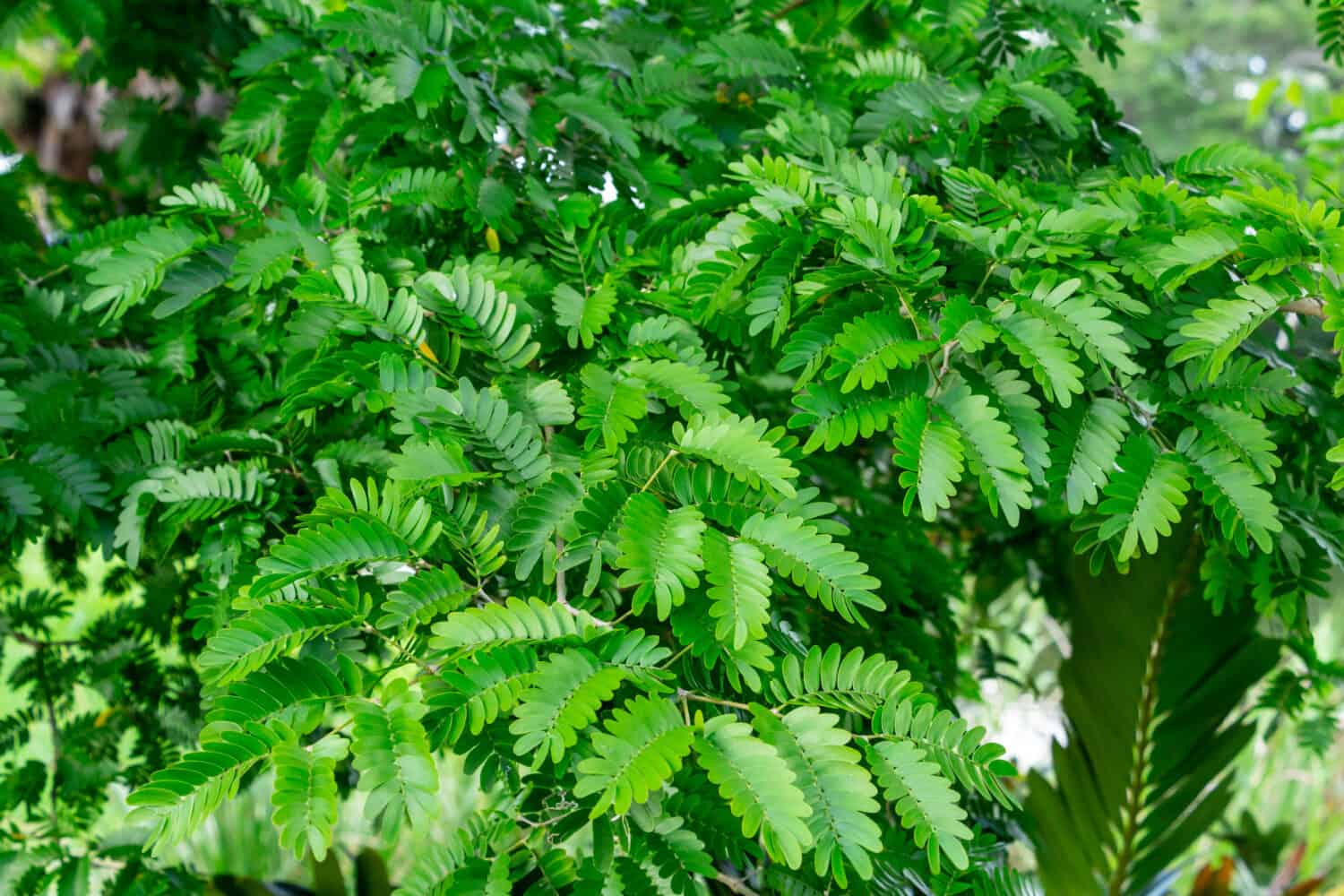
The beautiful fern-like leaves of Bulnesia arborea are the perfect backdrop to the yellow flowers.
©Sunshower Shots/Shutterstock.com
Verawood (Bulnesia arborea), native to Venezuela and Colombia, is a great addition to any warm climate garden. It grows rapidly and creates a wide, round form, producing shaded areas for comfort. It won’t get too large or dense like some other trees and will feature attractive yellow blossoms for several months. Verawood is also fine with soil that is not perfect, so if you have a problem area, put this fast-growing flowering tree on your shortlist. It is hardy in USDA Zones 9-12.
10. Flowering Pear
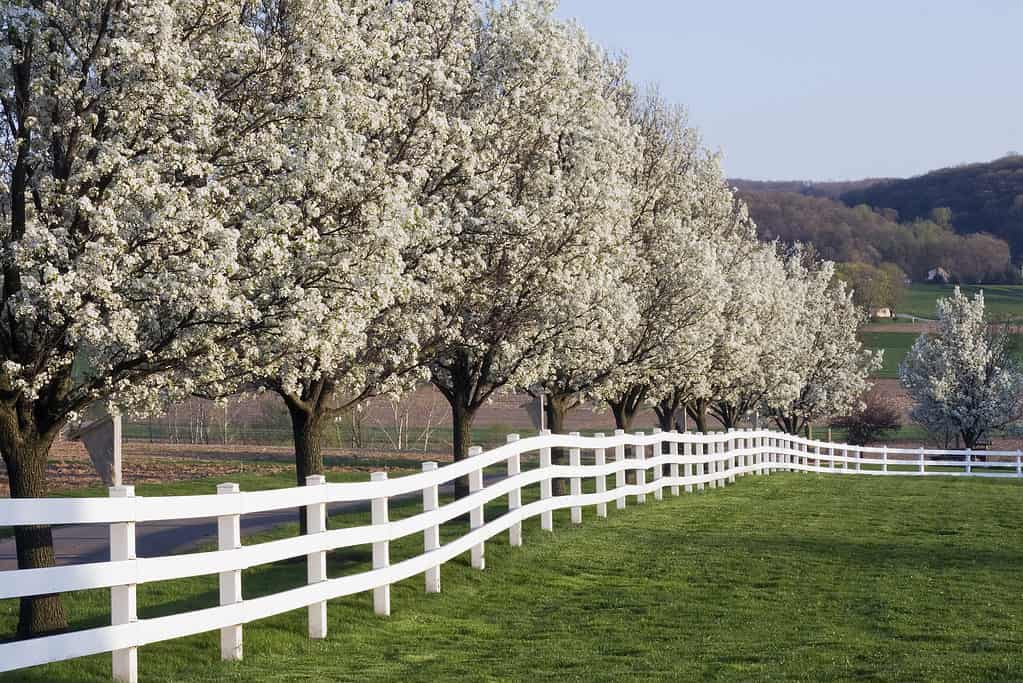
Pears are fast-growing flowering trees that help pollinators thrive in the spring.
©iStock.com/michaelmill
A flowering pear tree is a beautiful sight in any garden. It has a slender trunk with a rounded crown of branches and oval-shaped, glossy, dark green leaves. In the spring, the tree bursts into bloom with delicate white or pink flowers. Small, round fruits often follow the flowers.
Growing a flowering pear tree is relatively easy. It needs full sun and well-drained soil to thrive. Plant it in the fall or early spring, and water it regularly during the first year. Prune the tree in the winter to keep its shape and remove dead branches. Fertilize it every spring to ensure its health and vigor. With proper care, this fast-growing flowering tree will attract pollinators every spring.
11. Honey Locust
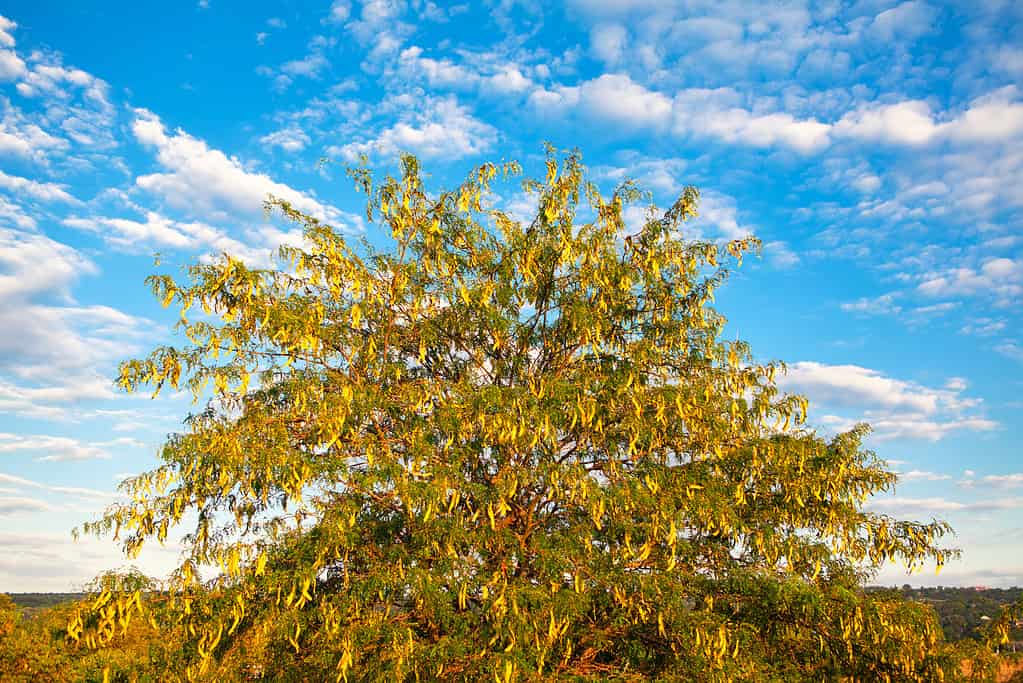
Gleditsia Triacanthos, or honey locust tree, is a fast-growing flowering tree that gets 70 feet tall in no time.
©RussieseO/ via Getty Images
The honey locust tree grows quickly, up to two to three feet per year, and can reach up to 70 feet high when fully mature. It has fragrant white flowers that hang like bunches of grapes and delicate fern-like leaves that will flutter in the wind. In the fall, its bright yellow leaflets will drop from the tree like snow, and you don’t need to rake them. The open canopy of the tree allows for the growth of perennials and beds below, and it is hardy in zones 4 through 9.
12. Dogwood
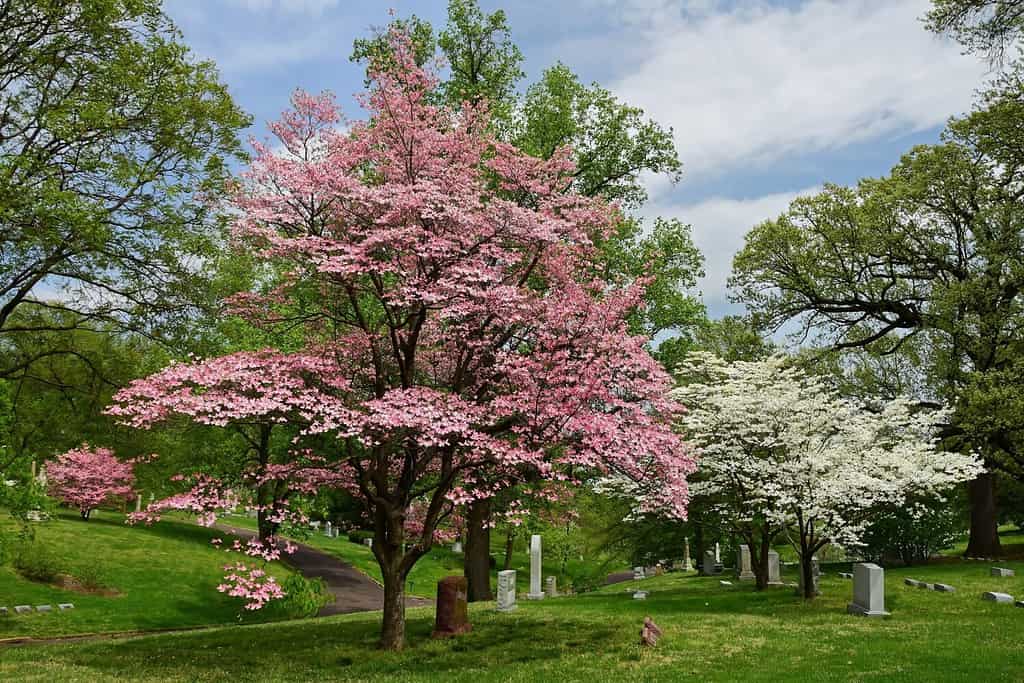
If you don’t have much space, the flowering dogwood is a fast-growing flowering tree that is only 35 feet tall.
©Nina B/Shutterstock.com
The dogwood tree is one of the most important fast-growing flowering trees in the US, as it grows in nearly every state. It is resilient to snowy and icy winters and presents a spectacular show of flowers in the early spring that completely covers the tree. White dogwoods are native, but you can buy pink and red varieties as grafted saplings. The growth rate of the dogwood is 3ft per year, with a mature height of 35ft. It is hardy in USDA Zones 5-9.
13. Golden Rain Tree
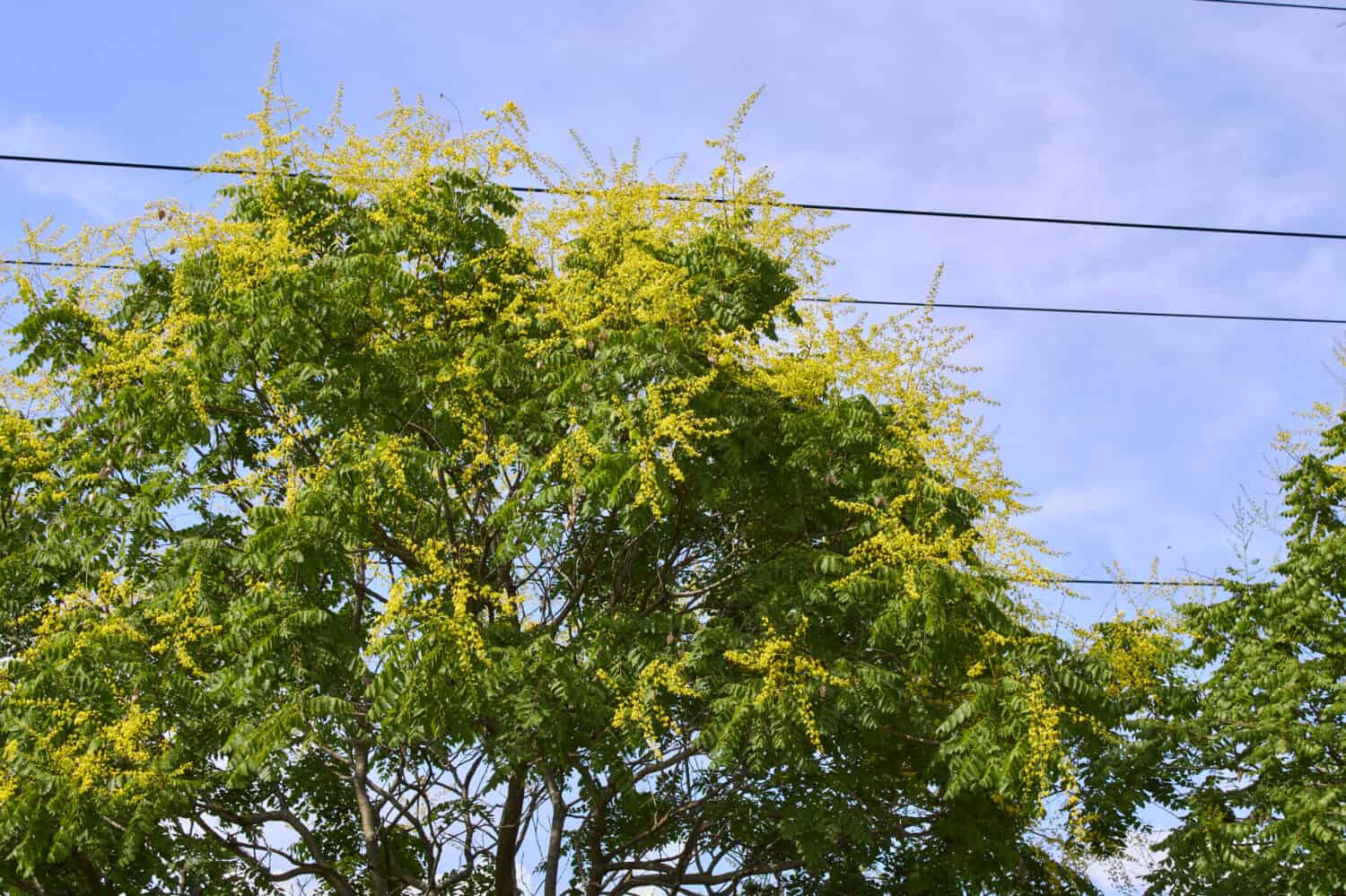
If you need a fast-growing flowering tree, Koelreuteria paniculata will grow 4 feet taller every year!
©simona pavan/Shutterstock.com
The Golden Rain Tree (Koelreuteria paniculata) is a fast-growing flowering tree that can quickly add beauty to any yard. It starts blooming during early summer, just when many other flowering trees are done for the year. Cities and parks often plant this tree due to its ability to survive in a wide variety of environments and soil types. When it’s done blooming, the tree produces large, eye-catching seed pods that start off pink and gradually turn tan over the fall. Growing at a rate of 3-4 feet per year, the Golden Rain Tree can reach a mature height of 25-30 feet in no time. It is hardy in USDA Zones 5-9.
14. Mimosa
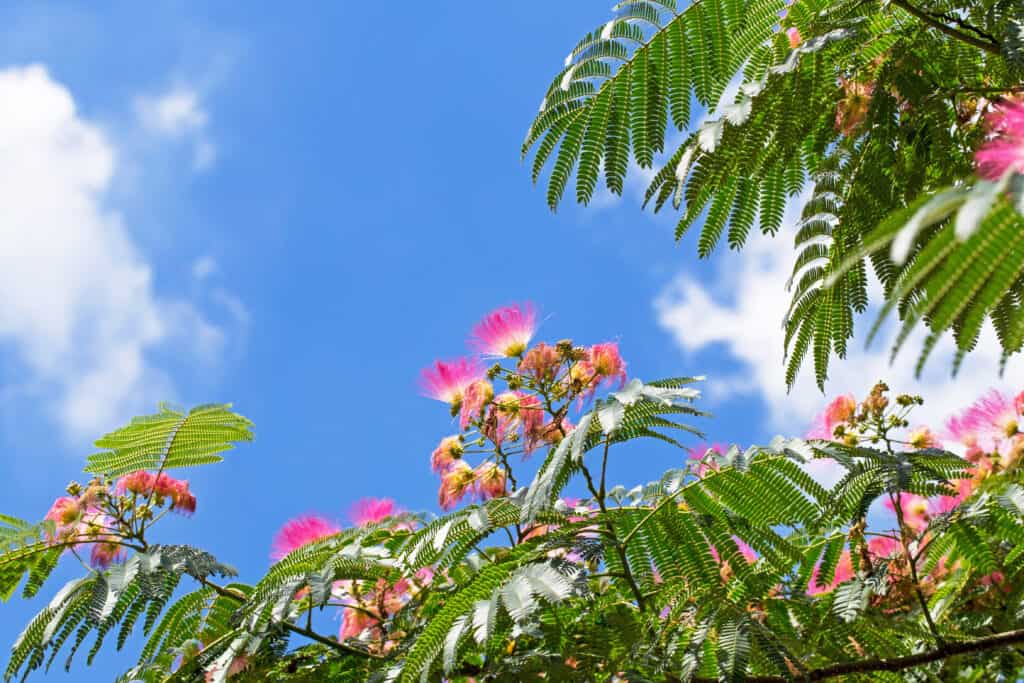
Some people call Albizia julibrissin the Persian Silk Tree; others call is the Mimosa Tree.
©nnattalli/Shutterstock.com
The mimosa tree is a fast-growing flowering tree that is capable of flourishing in nearly all US states. Its unique flowers feature threadlike filaments with tiny, fan-shaped petals in shades of pink, red, and occasionally white. The roots are legumes that convert atmospheric nitrogen into a soluble fertilizer, allowing it to thrive in different soil pH levels. These trees usually bloom in their first year and grow at an average rate of 3 feet per year, reaching a mature height of 50 feet. It is hardy in USDA Zones 5-9.
Thank you for reading! Have some feedback for us? Contact the AZ Animals editorial team.

